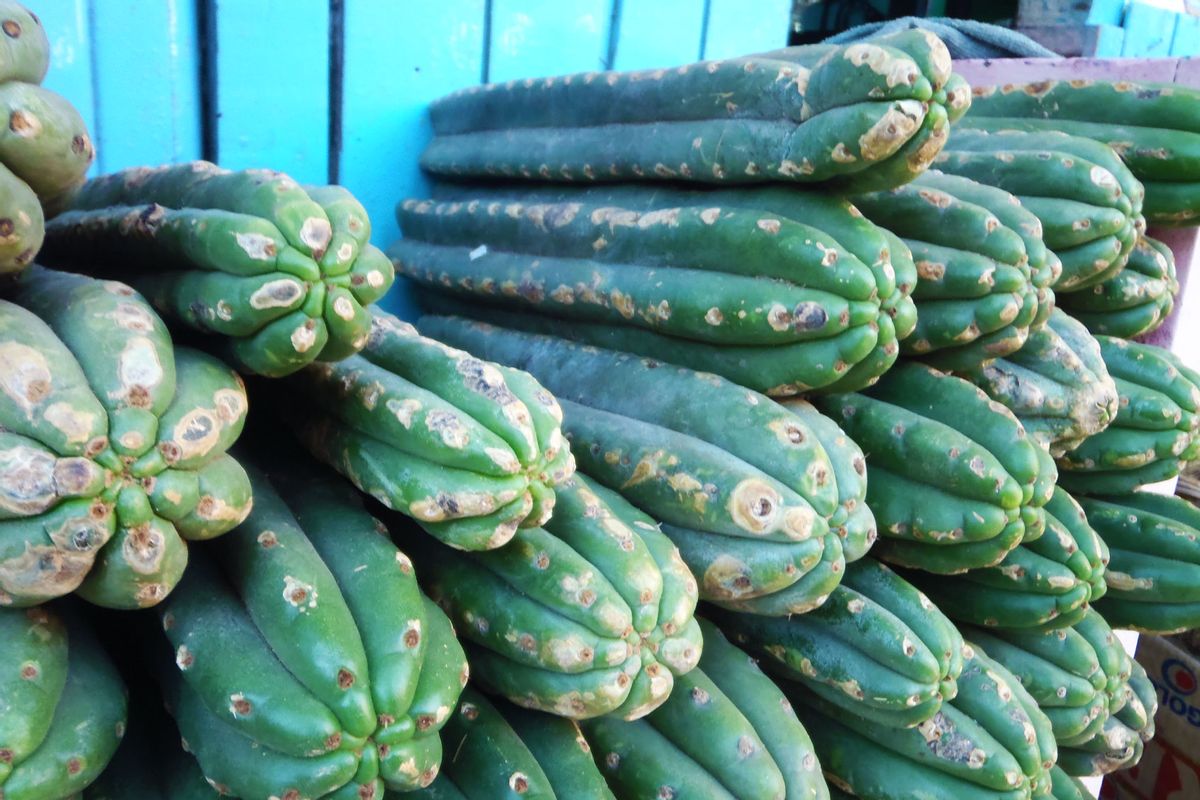An analysis of mummified heads and cadavers discovered on the Southern coast of Peru has pushed back the earliest known date of psychedelic cactus use and other psychoactive plants. Toxicology reports on five individuals who were ritually executed between 500 to 2100 years ago revealed the use of coca leaves (which contain cocaine), hallucinogenic San Pedro cactus and Banisteriopsis caapi, a plant often used in the psychedelic brew ayahuasca.
The study, recently published in the Journal of Archaeological Science, sheds new light on religious practices, ancient trade routes and plant-based medicine in the pre-Columbian Andes. The research was led by Dagmara Socha from the Centre for Andean Studies at University of Warsaw, who has previously studied the remains of human sacrifices at volcanoes during the Incan Empire, among other ancient murder mysteries.
"The level of the mescaline in the child's hair suggested a high consumption of the San Pedro cactus."
The latest research focused on essentially drug testing the hair of 22 buried cadavers, including four mummified "trophy heads," individuals that were decapitated and turned into ritualistic objects. Using World Anti-Doping Agency guidelines, the researchers ran these hairs through a mass spectrometer, a machine that can identify the chemical signatures in samples, and found traces of numerous intoxicating plants.
Two hair samples, including one from a child, contained traces of mescaline, a strong psychedelic with hallucinogenic properties similar to psilocybin "magic" mushrooms and MDMA. Mescaline naturally appears in many different cacti, but is especially associated with peyote, a small cactus that has been used for religious purposes for thousands of years before Jesus was born.
"The level of the mescaline in the child's hair suggested a high consumption of the San Pedro cactus," the researchers reported. They hypothesize that before being sacrificed, the child was fed San Pedro (Echinopsis pachanoi), a tall, column-shaped succulent with the most mescaline content of any cactus. Mescaline was one of the earliest psychedelics identified by Western scientists, first isolated by German chemist Arthur Heffter in 1896 and later popularized by authors like Aldous Huxley.
But archaeological evidence suggests some indigenous peoples were familiar with this drug for around 5,000 years prior, at least through peyote. This analysis is the oldest evidence specifically of San Pedro use, but potentially other psychoactive substances as well.
Two other samples contained traces of harmine and harmaline, drugs that are found in Banisteriopsis caapi, a woody Amazonian vine. It is commonly mixed into ayahuasca, a name which means "vine of the dead," describing a brew used in many different Central and South American cultures for spiritual practice. Ayahuasca has become popular among Western people, including celebrities like Will Smith and Aaron Rodgers, because it contains a drug called DMT that can have rapid antidepressant effects.
DMT (N,N-dimethyltryptamine) is one of the most powerful naturally-occurring psychedelics on the planet. When smoked, it only lasts about 20 minutes, but the experience can be intense and life-changing. Some users report vivid hallucinations like fractal-filled chambers or encounters with "beings" that can feel like a near-death experience. This is why the drug is sometimes called the "spirit molecule."
But DMT isn't very active when swallowed because the body metabolizes it too quickly. This can be remedied by taking DMT with another drug, called a monoamine oxidase inhibitor (MAOI), which prevents the quick metabolism of DMT, allowing for its trippy effects to take hold. Some MAOIs are commonly prescribed as antidepressants, while some occur naturally in plants.
Want more health and science stories in your inbox? Subscribe to Salon's weekly newsletter The Vulgar Scientist.
B. caapi contains many drugs, including harmine, tetrahydroharmine and harmaline, which can act as MAOIs. When B. caapi is combined with another DMT-containing plant like Psychotria viridis, the two work together to create a fierce, other-worldly experience. When combined in this form, an ayahuasca experience can last between three and seven hours.
The analysis of human sacrifices only found traces of B. caapi and no DMT, however, so these two individuals may not have been taking ayahuasca, but harmine, for example can be psychoactive alone. Ayahuasca preparations can also vary from culture to culture, some containing less DMT than others.
Five samples were also positive for cocaine or one of its metabolites, benzoylecgonine, suggesting some victims chewed coca leaves during their lifetime. This is the oldest existing evidence for such a practice on the southern Peruvian coast, but chewing the leaves is a much different effect than snorting raw cocaine powder. The buzz is far more mild, closer to a cup of coffee, while even providing some health benefits, as the leaves are chock full of vitamins and minerals.
However, B. caapi and coca both grow in the jungle, a considerable distance from the arid region where the bodies were found. This indicates that these plants were traded for long distances, signifying their importance in ancient cultures. "The presence of benzoylecgonine and mescaline in the hair of trophy heads belonging to a female and a child suggest that at least some of the victims went through special preparations before being sacrificed," the authors conclude.
Humans have been using psychoactive plants and fungi since before recorded history, with our penchant for intoxicants likely driving our evolution as primates. As psychedelics re-enter the mainstream, for better or worse, it's worth examining the roots of these enlightening substances and how they've shaped human history.



Shares